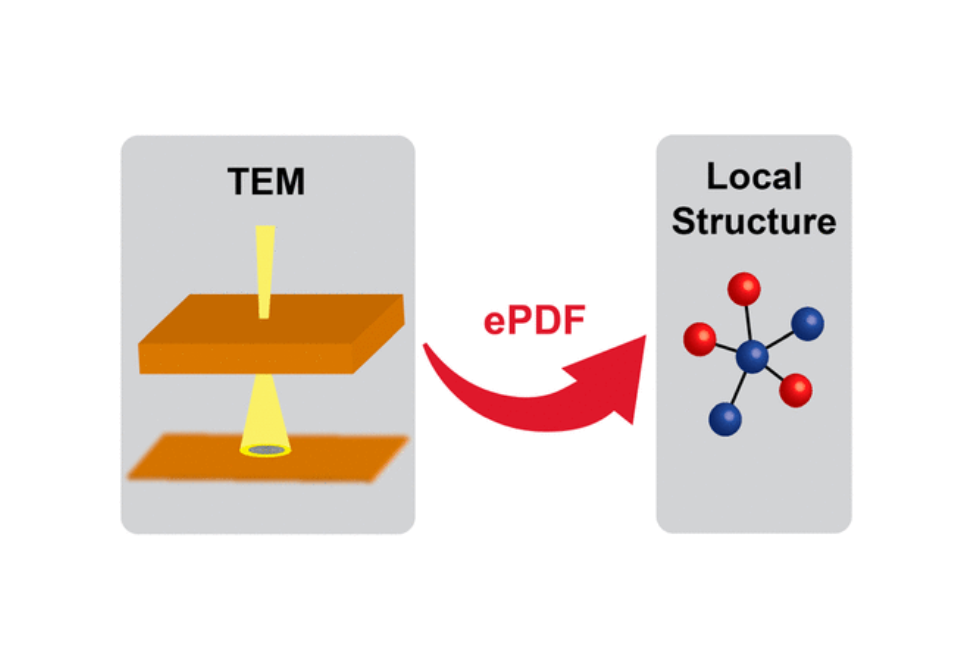Quantifying the Local Structure of Nanocrystals, Glasses, and Interfaces Using TEM-Based Diffraction
Abstract
Although order is a defining characteristic of crystals, disordered structures─especially near interfaces─often govern a material’s performance. For example, the interfaces in batteries, coatings, or catalysts exemplify systems in which disorder plays a critical role. Despite this importance, characterization of local structure in disordered materials remains a challenge. To solve this challenge, the electron pair distribution function (ePDF) method has given insight into the local structure of many complex samples because the technique can be applied to disordered materials containing as few as tens or hundreds of atoms. The ePDF method takes a transmission electron microscope (TEM) diffraction pattern and transforms this into information about the bond lengths present in a material. This information can then be used to create a 3D, atomic-scale model of local chemical structure. In this review, we introduce the theory behind ePDF, describe common methods for data acquisition, and highlight recent advances in the ePDF technique, including its combination with cryo-electron microscopy, ultrafast TEM, and precession electron diffraction. We also show how ePDF has been applied to important classes of materials, including 2D heterostructures, nanoscale interfaces, and materials fabricated by atomic layer deposition. Finally, we review how ePDF can be combined with other techniques to provide a comprehensive understanding of a material. Because ePDF can be performed on most TEMs, it is beginning to emerge as a routine method for the analysis of complex, disordered structures in technologically important materials.
Citation
Quantifying the Local Structure of Nanocrystals, Glasses, and Interfaces Using TEM-Based Diffraction
DOI: 10.1021/acs.chemmater.1c03017


